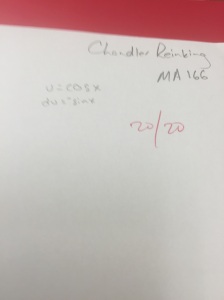The peer review session that we went over genuinely helped me get a better understanding of what I needed to work on. It was similar to the type of peer review I’ve done all through high school, but allowed me to get feedback on my own idea while also allowing me to see an example of what another one looks like. Looking at another example lets me to incorporate some of the things I felt were done well in their paper. At the minimum, it was interesting to read their paper as well as have their website up while they analyzed it. This analysis gave me the chance to see what it was that they were thinking, and then see if there were similar things in the website I was reviewing.
Probably the most major issue I found in my rough draft was my organization of the paper. Another problem frequently found in it was the over assumptions that were made. Reading my paper after thoughts like this were mentioned helped me to understand my paper in a different way. I hadn’t seen the views that were described when I first read it back to myself, so this new perspective gave me the chance to fix the mistakes currently in place.
The way that we did the peer review was similar to that of the weekly conference. Both are of these are set up to improve your writing, and it’s nice to get the personal interaction of ideas. I’m willing to do anything if it is able to make me a better writer, as that is something I feel I struggle with. As I previously mentioned, getting advice from a fellow person and seeing their work as an example really benefits me.








